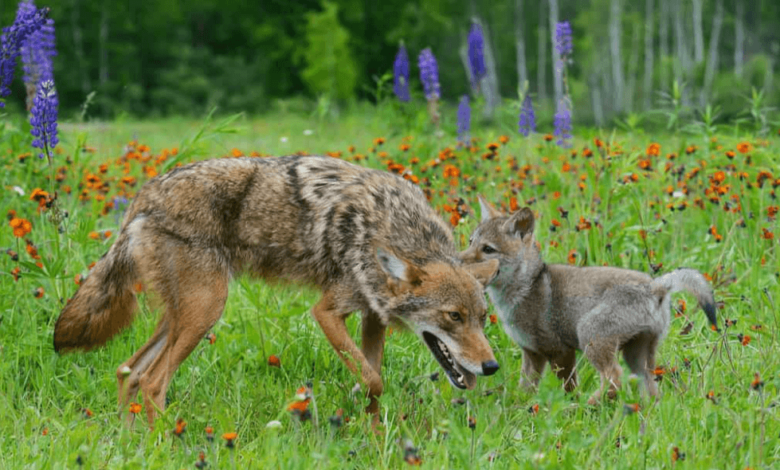Baby: Cute: Coyote

Baby: Cute: Coyote often outweighs the complexities surrounding their existence. With their diminutive size and enchanting features, these pups represent a striking juxtaposition to the often misunderstood nature of their species. As they navigate their early lives within the protective embrace of their family units, they exhibit behaviors that reflect both their innate instincts and learned social skills. However, this perception of cuteness can obscure the larger ecological implications of their development. What lies beneath the surface of their charming facade may challenge common assumptions about their role in the ecosystem.
Physical Characteristics of Baby Coyotes
Baby coyotes, typically weighing between 1 to 2 pounds at birth, exhibit a range of distinctive physical characteristics that set them apart from other canids.
Their soft, downy fur is often a mix of gray, brown, and cream, providing camouflage.
As they experience rapid baby coyote growth, their ears become more pronounced, and their eyes, initially closed, open to reveal striking, curious gazes.
Social Behavior and Family Dynamics
In the heart of their family structure, baby coyotes thrive within a tightly-knit social unit known as a pack, which is primarily led by the alpha pair.
This pack hierarchy fosters effective parenting strategies, where adults cooperate in nurturing and teaching the young.
Through social interactions, baby coyotes learn essential survival skills, ensuring their development within this dynamic and supportive environment.
Read Also Logo:7s4ep9-Lcvo= Apple Store

Habitat and Environmental Impact
The habitat of baby coyotes plays a significant role in their development and overall survival within the pack.
Coyote dens, often located in secluded areas, provide shelter and safety for the young.
Additionally, their ecological role is crucial; as apex predators, they help maintain balanced ecosystems by regulating prey populations, ensuring a harmonious coexistence in their environment while promoting biodiversity.
Misconceptions About Coyotes
Coyotes often evoke a mixture of fascination and fear, leading to a host of misconceptions that cloud public perception of these adaptable animals.
Common coyote myths include beliefs that they are dangerous to pets and humans, overlooking their primarily scavenging nature.
Their increasing urban presence, however, highlights their remarkable ability to coexist with humans, often dispelling fears when properly understood.
Conclusion
In conclusion, the Baby: Cute: Coyote extends beyond their undeniable cuteness, revealing intricate social behaviors and vital family dynamics that contribute to their survival. These young creatures, equipped with remarkable physical adaptations, thrive within their natural habitats, often challenging common misconceptions about their nature. Can the captivating charm of these pups inspire a deeper appreciation for the complexities of wildlife and their roles in the ecosystem? Understanding these dynamics fosters respect and awareness for the species as a whole.




